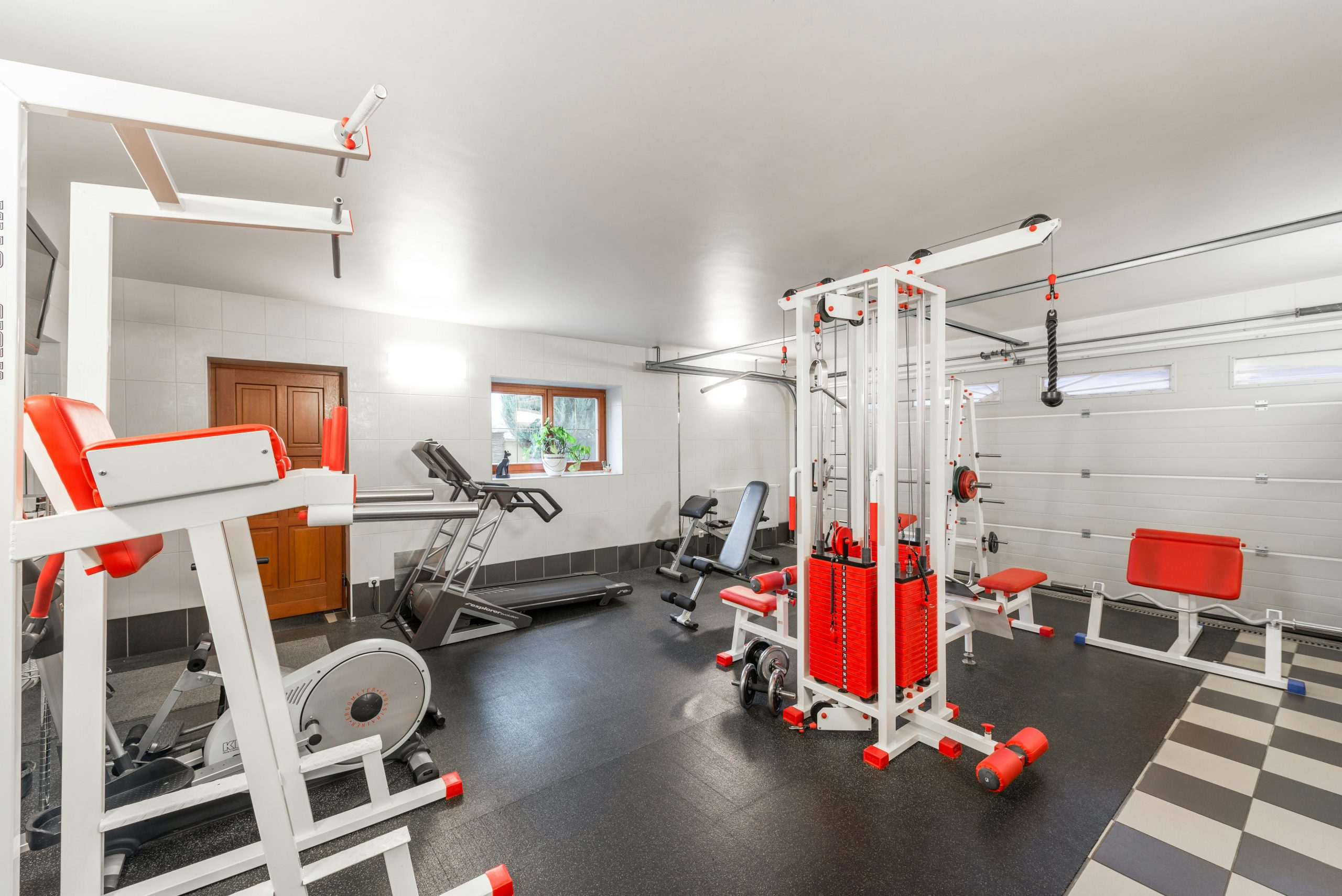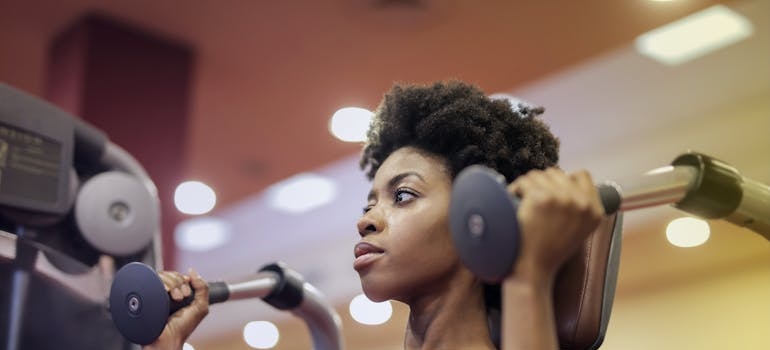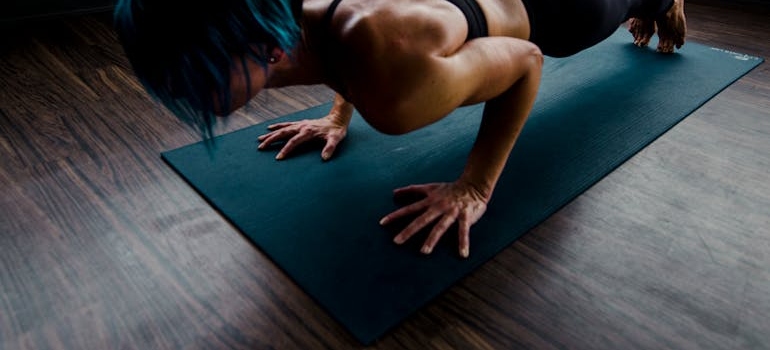How to convert your garage into a gym
get a quote
Garages are often underutilized spaces in our homes, primarily serving as parking spots or storage areas for miscellaneous items. However, these versatile spaces hold great potential for transformation. One popular idea is to convert a garage into a functional home gym, providing a convenient and personal space for fitness. If you’ve been considering this, you’re not alone. At PortaBox Storage Seattle, we’ve seen many homeowners leveraging our storage solutions to create the extra space needed during such remodeling projects. So, let’s explore how to convert your garage into a gym successfully, transforming it into a space that supports your health and fitness goals!
Steps to convert your garage into a gym
Transforming your garage into a gym is a practical and rewarding way to enhance your home and support your fitness goals. The process may seem confusing at first, but breaking it down into manageable steps can make it more achievable. Here, we’ll outline the key steps involved in this project, providing a clear roadmap to help you get started:
- Evaluate your space
- Establish a budget
- Declutter the area
- Identify fitness objectives
- Designate workout zones
- Prioritize accessibility and safety
- Acquire essential equipment
- Install appropriate flooring
- Implement lighting and ventilation solutions
- Optimize and organize the layout
- Regularly maintain your gym
Once the basic steps are completed, you can focus on optimizing your gym space. This project not only enhances the usability of your home but also provides a convenient space to pursue your fitness goals. Also, utilizing reliable storage pods Seattle offers can help streamline the process, offering a practical solution for managing your belongings during the transformation.

Planning and preparation
The first step in converting your garage into a gym is to assess the available space. Measure the dimensions of your garage to determine how much room you have to work with. This will help you plan the layout and ensure that you can fit all the necessary equipment without overcrowding. Next, setting a budget is crucial to avoid overspending.
Identify the essential equipment you need, such as weights, a bench, and cardio machines, and distinguish these from optional items. Additionally, allocate funds for necessary modifications, including flooring, lighting, and ventilation. Finally, clearing out your garage is a significant part of the preparation process. Start by decluttering and organizing existing items.
Designing your gym layout
Your fitness goals will dictate the design and layout of your gym. Consider the types of workouts you plan to do—whether it’s cardio, strength training, or yoga—and plan the space accordingly.
Hence, creating zones within your garage gym can help you stay organized and make your workouts more efficient. Designate specific areas for different activities, such as a zone for free weights, another for cardio machines, and a separate space for stretching and bodyweight exercises.
You also need to ensure there is enough space to move around safely. Properly spaced equipment reduces the risk of accidents and injuries. Plan for the safe storage of smaller equipment in a Bellevue self storage unit, such as resistance bands and dumbbells, to keep the area tidy and hazard-free.

Essential equipment and installation
It is key to invest in quality, versatile equipment that will cover your workout needs. Essential items might include a set of free weights, resistance bands, a bench, and a cardio machine like a treadmill or stationary bike. In this sense, proper flooring is vital to protect your garage floor and reduce impact during workouts. Rubber mats or foam tiles are popular choices as they provide cushioning and are easy to clean.
Good lighting is essential for visibility and safety as you convert your garage into a gym, so install bright overhead lighting and consider adding task lighting in specific zones. Ventilation is equally important; use fans or install a ventilation system to keep the space cool and comfortable.
Optimizing your gym space
Keeping your gym organized is crucial for both safety and efficiency. Utilize wall mounts, racks, and shelves to store equipment. A mobile, short term storage Seattle unit can be an excellent solution for keeping seasonal or infrequently used items out of the way.
Mirrors are a valuable addition to any home gym. They help you monitor your form during exercises and make the space feel larger and more open. Also, adding personal touches can make your gym more motivating and enjoyable. Consider putting up motivational posters, setting up a sound system, or installing a TV for entertainment during workouts.

Maintaining your home gym
Keep your gym clean by wiping down equipment after use and regularly sweeping or vacuuming the floor. This helps maintain a healthy environment and prolongs the life of your equipment. Hence, you need to regularly inspect your equipment for any signs of wear and tear.
Proper maintenance, such as lubricating moving parts and tightening loose bolts, ensures safety and extends the life of your gym gear. And because your fitness needs may change over time, it’s important to reassess your setup periodically. Make adjustments or upgrades as needed to keep your gym functional and aligned with your goals.
Enjoying your garage gym transformation
Creating a home gym is more than just a home improvement project—it’s an investment in your health and well-being. If you systematically plan each step, from evaluating your space to ensuring safety and proper organization, you can create a functional and motivating workout environment right at home.
Leveraging solutions like self storage Boise units can help you convert your garage into a gym smoothly, providing the extra space needed to steer through the transformation. Finally, you can enjoy the convenience of having your personalized gym and take pride in the versatile use of your garage!
